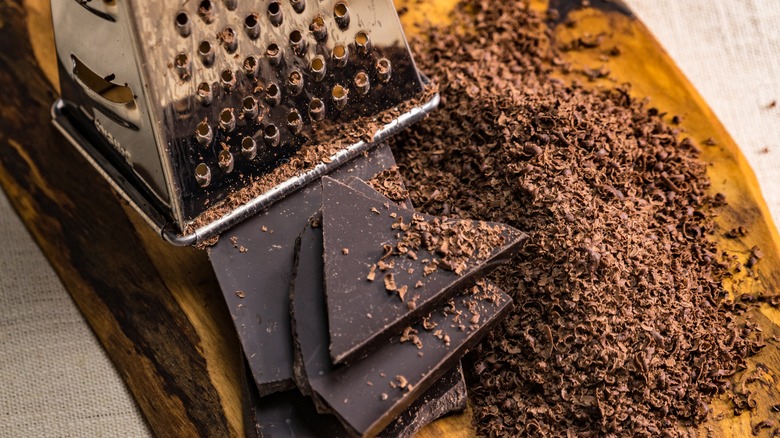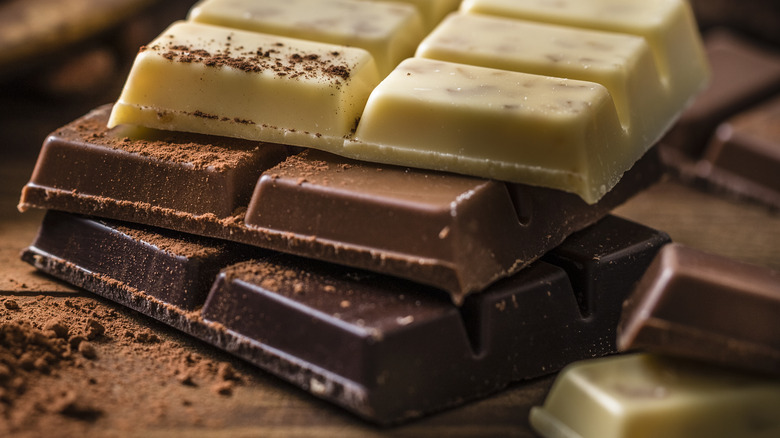The Clever Hack To Grate Chocolate Without Creating A Mess
When it comes to baking with chocolate, a box grater is truly a baker's best friend. Whether you're shaving a sweet garnish over hot chocolates and lattes, grinding up a good bark for your black forest cake, or just grating chocolate to melt and temper, a grater is all you need to get it done. The problem is, it's not always the easiest or most straightforward task. If you're trying to grate an entire block of chocolate, it might take you more than a minute — and at room temperature, chances are it's going to go soft and hard to work with before you're halfway done. The next time you plan on putting yourself through the messy process of it all, place the chocolate and your grater in the freezer for at least 10 minutes first to skip the headache.
It works just like the reverse of dipping your ice cream scoop in hot water. While the pre-freeze won't make your chocolate immune to softening up and getting difficult, it'll buy you time to get the job done before it starts turning into a mess. Better yet, it'll also help the grated chocolate from starting to melt into one big pile: While that's not as much of an issue if you're planning on melting the chocolate anyway, it's one less problem if you need perfect flakes.
The kind of chocolate matters
Another thing to consider is that the type of chocolate factors into how easy it is to grate, as much as the temperature. If you're working with really dark chocolate, you might not have to freeze the grater and chocolate beforehand at all: The lower cocoa butter content makes it nice and rigid even at room temperature. Milk chocolate has more creaminess to it and will definitely benefit from a trip to the freezer before grating, especially on warmer days. Finally, the most difficult to grate is white chocolate, which is almost entirely cocoa butter and has very little cacao content, if any. You'll certainly need to chill white chocolate before and after grating if you want it to stay solid and avoid a gooey mess and a gummed-up grater.
That all said, check for the quality of your chocolate as well. Low-quality chocolate often contains a ton of additives like hydrogenated vegetable oils that affect the texture, and can make the chocolate stickier. You might also find that cheaper chocolate is more brittle or gritty when grated and won't curl as smoothly as higher-quality chocolate will. If appearance matters, make sure to head to the pricier end of your chocolate aisle.

